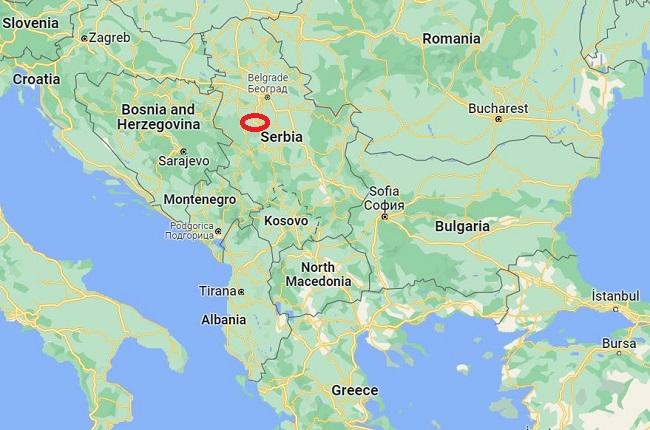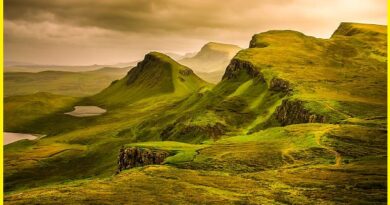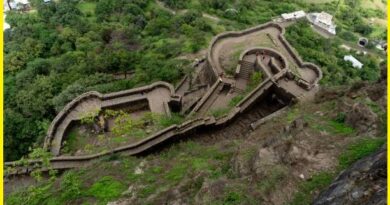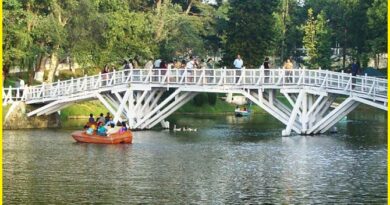Serbia, A Magical landlocked country in Europe
Serbia Europe
Serbia is a country located in southeastern Europe, in the Balkan Peninsula. It is bordered by several countries including Hungary, Romania, Bulgaria, North Macedonia, Kosovo, Montenegro, and Bosnia and Herzegovina. Serbia has a rich history and culture, with evidence of human settlement dating back to the Paleolithic era. It was once part of Yugoslavia, which broke up in the early 1990s, leading to several conflicts in the region. In 2006, Serbia declared independence from the union with Montenegro, and since then has been a sovereign nation.
Belgrade, the capital of Serbia, is one of the oldest cities in Europe, with a history dating back to the Roman Empire. Other important cities in Serbia include Novi Sad, Niš, and Kragujevac. Serbia is known for its diverse landscapes, including the Danube River and the Balkan Mountains. The economy of Serbia depends on agriculture, manufacturing, and services. The country is also known for its cultural heritage, including its traditional music, dance, and cuisine. Notable Serbian figures include scientist and inventor Nikola Tesla, tennis player Novak Djokovic, and writer Ivo Andric, who won the Nobel Prize for Literature. Serbia map-The Serbia Map shows the surrounding major nation and cities.

Places to visit in Serbia Europe
Belgrade
Belgrade, the capital of Serbia has a rich history and diverse culture. Some of the must-see attractions include the Belgrade Fortress, St. Sava Temple, Skadarlija, and the Museum of Yugoslav History. Novi Sad is the second-largest city in Serbia, Novi Sad, is known for its beautiful architecture, cultural events, and festivals. The city’s main attraction is Petrovaradin Fortress, a 17th-century fortress that offers stunning views of the Danube River and the city. Niš is another city with a long and fascinating history, located in Southern Serbia. Visitors can explore its ancient Roman ruins, Ottoman architecture, and the Niš Fortress. The city is also famous for its traditional food, especially grilled meat dishes.
Also, read- Vredefort Dome-World’s oldest and largest Impact Structure South Africa
Đerdap Gorge
Đerdap Gorge, also known as the Iron Gate, is a spectacular natural wonder located in eastern Serbia. It is a 100-kilometer-long gorge that stretches along the Danube River, forming a natural border between Serbia and Romania. The gorge is characterized by steep cliffs, dense forests, and deep blue waters, and is home to a variety of plant and animal species. It is also an important cultural and historical site dating back to the Roman Empire. The Đerdap Gorge offers opportunities for hiking, cycling, and river cruises. It is also a great spot for fishing, with species such as catfish, perch, and pike found in the Danube River.
One of the most impressive sites in the gorge is the Tabula Traiana, a Roman monument built in the 1st century AD to commemorate the completion of a road connecting Serbia to Romania. Other notable attractions in the area include the Golubac Fortress, the Lepenski Vir archaeological site, and the Đerdap National Park.

Uvac Canyon
The Uvac Canyon is a stunning natural wonder located, close to the border with Bosnia and Herzegovina. It is a protected nature reserve and a popular tourist destination, known for its rugged landscapes, crystal-clear waters, and rich biodiversity. The Uvac River flows through the canyon, creating a series of meanders and deep gorges that are up to 1,000 meters deep in some places. The canyon is surrounded by steep cliffs, dense forests, and a variety of flora and fauna, including rare bird species such as the griffon vulture.
One of the most popular activities in the Uvac Canyon is boat tours, which take visitors along the river to explore the stunning scenery and wildlife. Visitors can also hike or bike along the many trails in the area, or go rock climbing or paragliding for a more adventurous experience. Other attractions in the area include Ice Cave, a natural cave with ice formations that are several meters thick.
Đavolja Varoš
Đavolja Varoš, or Devil’s Town, is a unique geological formation located in southern Serbia, near the town of Kuršumlija. It is one of the most popular tourist attractions in the country, known for its unusual rock formations, bubbling mud pools, and otherworldly landscapes. The formation consists of two main parts:-202 tall and thin earth pillars with stone caps, and two nearby hot springs with a high mineral content that create small mud volcanoes. The earth pillars, which are up to 15 meters tall, were formed over thousands of years by erosion and weathering, and are considered to be one of the most unusual natural phenomena in Europe. Travelers can explore the site via a marked trail that takes them through the pillars and the mud pools, offering breathtaking views of the surrounding countryside.
Kalemegdan
Kalemegdan is a historic fortress located in the heart of Belgrade. The fortress sits on a hill overlooking the confluence of the Sava and Danube Rivers and has a rich and fascinating history that dates back to the ancient Roman era. The fortress has been destroyed and rebuilt many times over the centuries, and has served as a military stronghold, a royal residence, and a cultural center.
Travelers in Kalemegdan can explore the fortress walls, gates, and towers, and take in panoramic views of the city and the rivers below. The fortress also houses several museums, including the Military Museum, which displays a collection of weapons, armor, and military equipment from different eras. One of the highlights of Kalemegdan is Kalemegdan Park, a large green space that surrounds the fortress and offers a peaceful oasis in the heart of the city.

House on the Drina
The House on the Drina is a unique and iconic structure located near the town of Bajina Bašta. The house is built on a small rock in the middle of the Drina River and has become a popular tourist attraction and a symbol of Serbian resilience and ingenuity. The house was originally built in the 1960s by a group of young swimmers who were looking for a place to relax and sunbathe on the river. They noticed the rock in the middle of the river and decided to build a small hut on top of it using leftover materials from their homes.
Over the years, the house has weathered floods, ice floes, and other natural elements, but has remained standing as a testament to the determination and creativity of its builders. Today, the house is a popular spot for swimming, sunbathing, and taking photos, and can be accessed by boat or by swimming from the nearby shore. The surrounding area has beautiful, with lush forests, rugged cliffs, and crystal-clear water, making it a popular destination for nature lovers and outdoor enthusiasts. Travelers can hike or bike along the river, go kayaking or rafting, or simply enjoy the peaceful atmosphere of the riverbank.
Apart from this Zlatibor is a popular tourist destination and a mountainous region in western Serbia. It offers stunning outdoor activities, including hiking, skiing, and horseback riding. The Studenica Monastery is one of Serbia’s most famous monasteries, Studenica is a UNESCO World Heritage Site located in central Serbia.
Things to do in Serbia
Serbia offers a range of activities and experiences for visitors to enjoy. The capital city Belgrade has a fascinating history to its lively lifestyle. Visitors can explore the Belgrade Fortress, St. Sava Temple, Kalemegdan Park, and the Bohemian Quarter of Skadarlija. Serbian cuisine is hearty, delicious, and influenced by various cultures is worth trying. Visitors can try traditional dishes like cevapi (grilled meat), sarma (stuffed cabbage rolls), and kajmak (a type of cheese spread). Explore Some of the must-visit sites including the Studenica Monastery, Gamzigrad-Romuliana Palace, and the Smederevo Fortress. Serbia is famous for skiing or snowboarding, and several ski resorts, including Kopaonik and Zlatibor, offer great opportunities for skiing and snowboarding in the winter. Serbia hosts many festivals throughout the year, including the Exit Festival music festival, the Guca Trumpet Festival, and the Belgrade Beer Fest which is worth seeing. Travelers can visit thermal springs offering relaxation and wellness treatments. Some popular ones include Vrnjacka Banja, Banja Koviljaca, and Sokobanja.

How to reach Serbia Europe
Serbia is easily accessible by air, land, and water, depending on your starting location and preferred mode of transportation. Serbia has several airports, the largest of which is Nikola Tesla Airport in Belgrade. This airport serves many major European cities and has direct flights to destinations in Asia and North America. There are regular bus and train connections between Serbia and its neighboring countries, as well as other destinations throughout Europe. Serbia is located on the Danube River, one of the major waterways in Europe. There are several ports along the river, including Belgrade Port, Novi Sad Port, and Prahovo Port, which offer connections to other Danube countries and beyond.



